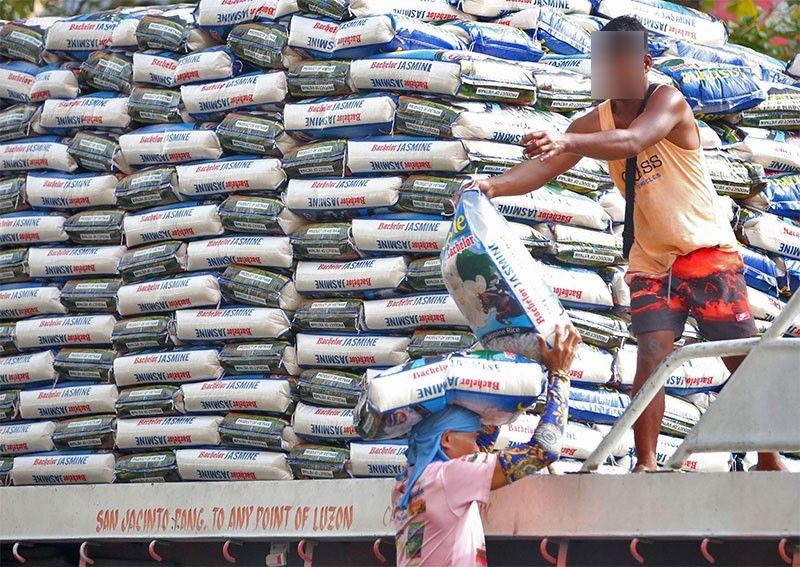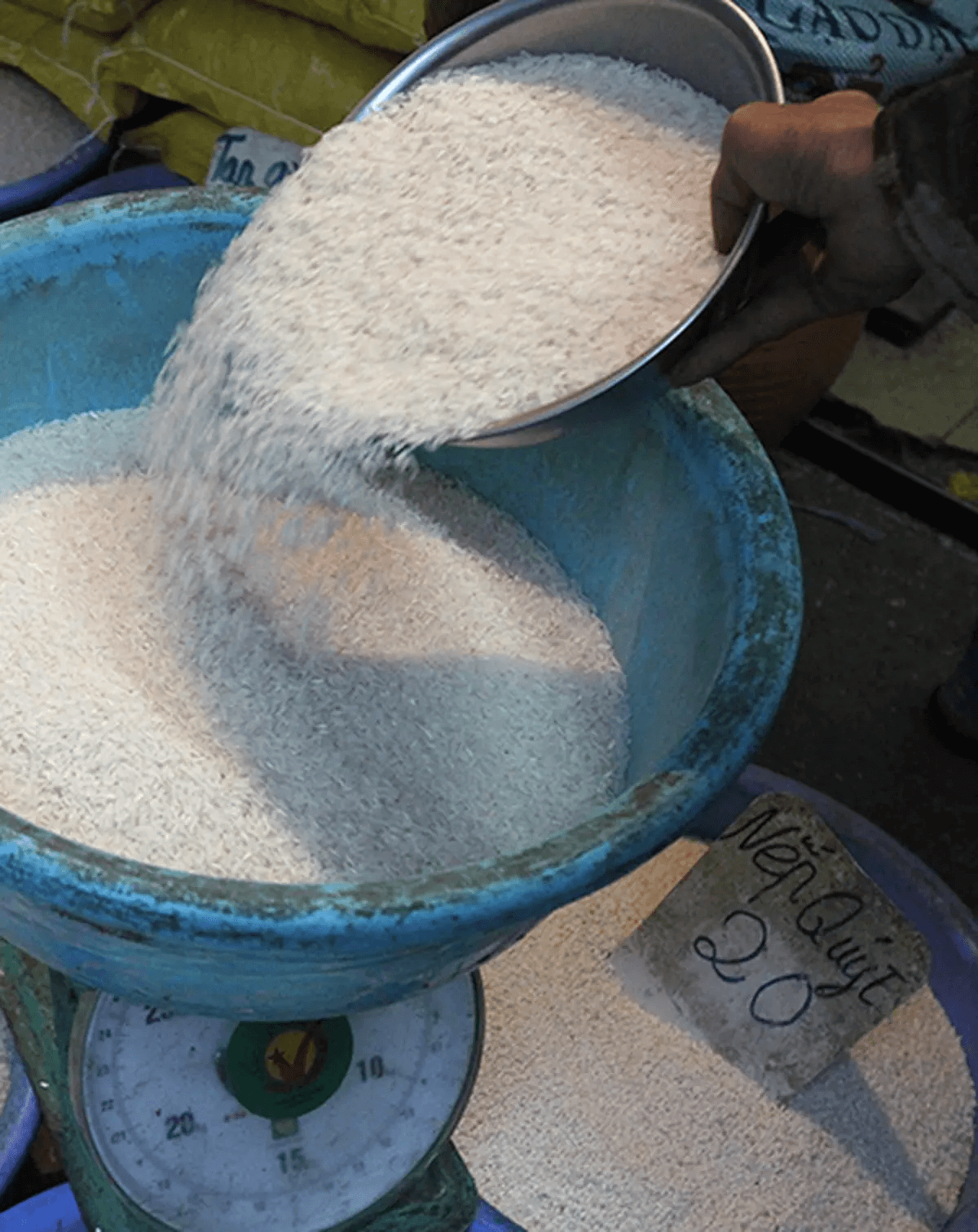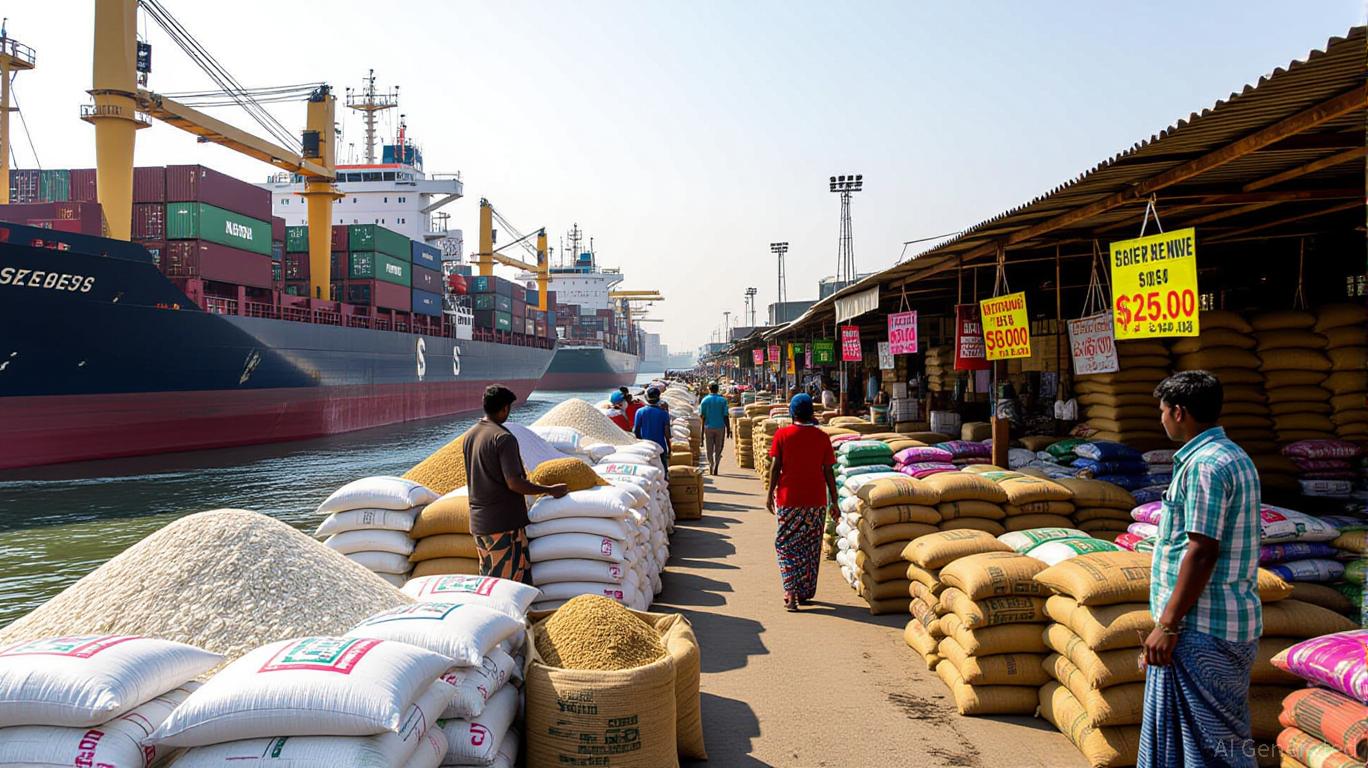Tags
2024 rice imports hit 570,000 MT

Workers unload sacks of rice from a delivery truck along Dagupan Street in Tondo, Manila on January 22, 2024.
MANILA, Philippines — The country’s rice imports have reached almost 570,000 metric tons as of mid-February, surpassing the total imported volume in the first two months of last year by over 40 percent.
Latest Bureau of Plant Industry (BPI) data showed that rice imports as of Feb. 16 hit 569,286 MT, about 44.28 percent higher than the 394,553 MT combined volume imported in January and February of last year.
BPI data showed that more than half of the rice imports or about 327,418.09 MT came from Vietnam, followed by Thailand at 154,234.38 MT and Pakistan at 60,638.3 MT.
Other rice suppliers to the Philippines during the reference period were Myanmar, Cambodia, Japan, India and Italy.
In terms of import arrival, Bly Agri Venture Trading led the 92 rice importers with a total import volume of 262,284 MT as of Feb. 16, followed by Orison Free Enterprise Inc. at 241,711.88 MT and Davao Solar Best Corp. at 223,808 MT, based on BPI data.
The increase in rice imports could have been caused by traders and importers hedging that global rice prices could still rise in the coming months, Raul Montemayor of Federation of Free Farmers said.
“Importers could be anticipating even higher prices in the coming months, so they are importing now despite the elevated prices,” Montemayor told The STAR.
Rowena Sadicon, founder and lead convenor of Philippine Rice Industry Stakeholders Movement, said the higher volume imported by the industry is “largely a preemptive strategy” against the anticipated adverse impact of El Niño on domestic rice production.
Sadicon explained that January and February are ideal months to bring in imports since these are considered “off-peak” months for domestic rice harvest, thus will not impact prices of paddy significantly.
“With the global market price of rice currently on a downward trend – contrasting last year’s peak prices influenced by India’s export ban – importing has become more economically favorable,” Sadicon told The STAR.
“The uptick in import volume signals a positive outlook for the country’s preparedness to face El Niño’s challenges. It indicates that there is an adequate supply of rice in the market, both imported and locally sourced, to tackle food security concerns effectively,” she added.
Furthermore, the BPI issued 1,240 SPSICs for the importation of 2.447 million MT during the reference period. Broken down, 979 SPSICs were issued in January (2.246 million MT) and 261 SPSICs were approved in February (201,071.97 MT).
The top three entities with the highest approved import volume were LVM Grains Enterprises (417,700 MT), Purerice Milling and Processing Corp. (405,600 MT) and Purefeeds Corp. (375,000 MT)
The SPSIC is issued by the BPI to ensure that imported agricultural products to the Philippines are safe for human and plant health.
Under existing rules, rice importers are allowed to bring in their approved import volume within a month after their respective SPSICs were issued.
Agriculture Undersecretary for operations Roger Navarro earlier said the country has sufficient rice stocks until the first half on the back of higher rice imports and anticipated dry season harvest in the coming months.
The US Department of Agriculture earlier hiked its rice import forecast for the Philippines to 3.9 million MT this year, driven by bigger purchases from Vietnam.
The Philippines imported almost 3.6 million MT of rice last year, down from the record-high 3.82 million MT in 2022.
https://www.philstar.com/headlines/2024/02/23/2335516/2024-rice-imports-hit-570000-mtPublished Date: February 23, 2024






